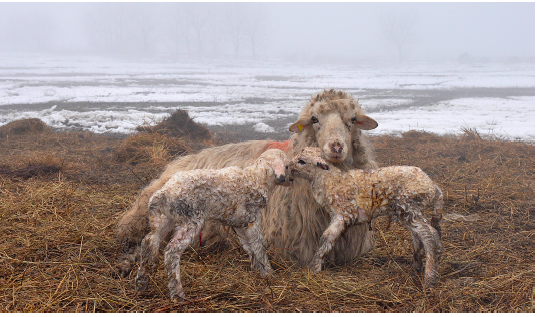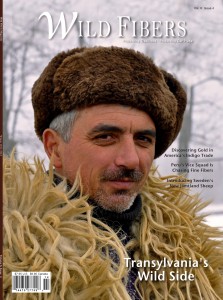I wouldn’t necessarily say I traded-in my high-heeled shoes for a bent pitchfork and a pair of mukluks because I suspect I don’t even own a pitchfork.
And since I easily loom over most, standing five feet ten inches tall (and that’s without pulling back my shoulders and straightening my neck), my shoe wardrobe has typically included a generous selection of non-threatening flats.
However, it is true to say that roughly 17 years ago I punted my nine-to-five rut in corporate America and moved to the willy wags of Maine. I decided I was going to become a farmer—a goat farmer. In fact, a cashmere goat farmer to be exact. My notion of country life at that time was largely colored by the endearing tales of James Herriot, and repeated episodes of Lassie. To classify my learning curve as “steep” would be a gross understatement.
But somewhere in the course of learning the difference between burdizzos and burdock, I began to develop a global interest in fibers. The cashmere goats that were first imported to the US went through some challenging times as farmers attempted to “Westernize” these beautiful animals with nutritionally packed diets. Except… the abundance of rich food often ushered many to an early grave.
Animals, which have historically evolved from some of the most barren parts of the planet (far above the tree line), were suddenly being “loved to death” and I began asking myself, “What have ‘we’ done to the fiber industry at large by ignoring the native habitat of so many different breeds? How do pastures in Missouri possibly compare to the mountains of Central Asia? And who are these people that have raised these animals for centuries, and what can we learn from them?
For every question I asked, five more followed. And somewhere in the midst of my wooly musings a magazine was born.
In 2004, less than ten years after I pounded my first fence post, I became the editor and publisher of Wild Fibers; the only publication in the world focused on all aspects of the natural fiber industry.
My goal was to bring both an awareness and understanding to the importance of natural fibers beginning with the animal or plant, and the people who raised them.
There has never been a shortage of interest in textiles and the role they have played in defining cultures since the dawn of time. But without wool, without cotton, without cashmere, or silk, would the ubiquitous Persian rug be nothing more than a knot of polyesters?
After one million frequent flyer miles, and enough airport strip searches to make my oh-so-proper mother wince, I have come to understand just one thing; the world of natural fibers is far more vast and far more important than most of the world realizes, and sadly, I have no doubt it will some day vanish if we don’t stop to listen and learn.
For more information about Wild Fibers, please visit www.wildfibersmagazine.com.
See a sample article Transylvania’s Wild Side.




